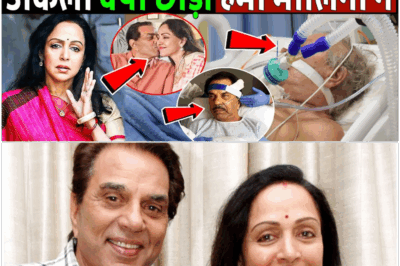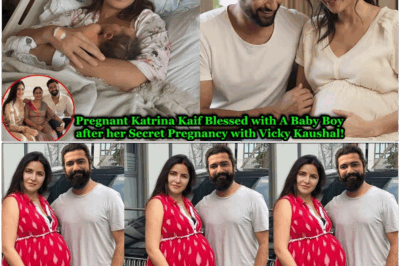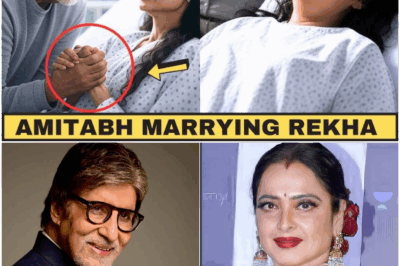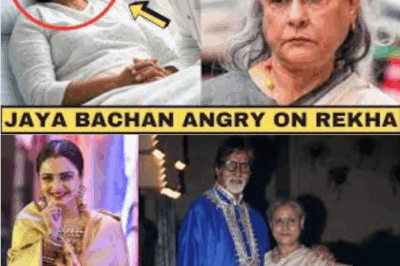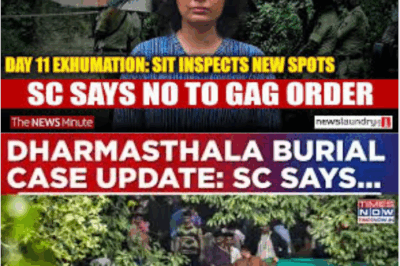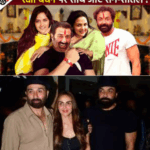On Raksha Bandhan, real and step siblings came togetherI Sunny Deol, Esha Deol, Bobby, Rakhi Special
Raksha Bandhan, a festival that celebrates the sacred bond between brothers and sisters, is one of the most cherished occasions in India. Despite the physical distances or the emotional gaps, it brings siblings together in a shared moment of love, protection, and celebration. Across households and generations, brothers promise to protect their sisters, while sisters pray for their brothers’ well-being, often marked by the tying of a rakhi – a symbolic thread that binds them emotionally. While most Indian families celebrate this day with unity and joy, for celebrity families like the Deols, the celebration unfolds in layers that go beyond tradition, revealing a complex network of personal choices, blended families, and unspoken boundaries.
The Deol family, a prominent name in Bollywood, has over the decades been at the center of many discussions — not just for their film careers but for their unique family structure. The patriarch, Dharmendra, was married to Prakash Kaur and had four children with her — including actors Sunny Deol and Bobby Deol. Later in his life, he married the iconic actress Hema Malini, with whom he has two daughters, Esha Deol and Ahana Deol. The two families have largely lived separate lives, rarely seen together in public. And though they technically belong to the same extended family, public appearances and social interactions between the half-siblings have been minimal, if not entirely absent.
In her autobiography, Hema Malini discusses various aspects of her life, including her relationship with Sunny and Bobby Deol. She portrays an image of cordial ties and mutual respect, even suggesting that the brothers occasionally visit her home and share warm moments with her daughters. Specifically, she claims that Sunny and Bobby come to their house on Raksha Bandhan to get rakhi tied by Esha. But this narrative, though heartwarming, raises questions about visibility and authenticity in the age of media. Despite Hema’s claims, no substantial visual or public evidence supports these family gatherings. No pictures have ever surfaced of Sunny or Bobby at Hema Malini’s home, particularly on occasions as significant as Raksha Bandhan.
In today’s hyper-connected world, where even minor celebrity sightings are documented by the media, it seems unusual that such family events would go entirely unnoticed. Paparazzi culture in India is relentless, especially when it involves major Bollywood families. The absence of any visual documentation — photos, interviews, social media posts — raises skepticism among fans and media alike. It’s not just about voyeurism or curiosity, but about the public perception of truth versus narrative. If these family interactions truly occur, why have they remained so private?
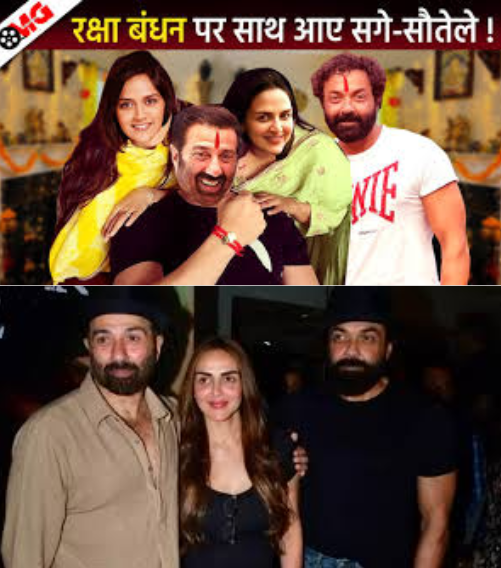
One possible explanation is the desire to maintain boundaries and avoid media scrutiny. The Deol family has always been reserved about their personal lives. Sunny Deol, especially, is known for guarding his privacy with utmost seriousness. It wasn’t until he appeared on Koffee with Karan in his 60s that he finally opened up, albeit briefly, about his step-family. He admitted that certain relationships in life must simply be accepted, even if they can’t be changed or nurtured the way others might expect. His tone was not resentful but reflective, hinting at a quiet acceptance of family dynamics rather than an active engagement with them.
Hema Malini and her daughters, on the other hand, have occasionally spoken openly about their relationships — or lack thereof — with their stepbrothers. Esha Deol, in interviews, has mentioned that while she respects her father and his family, her interactions with Sunny and Bobby have been limited. Her Raksha Bandhan wishes are typically posted on social media, often accompanied by symbolic messages or old memories, but rarely with present-day photographs. Similarly, Sunny and Bobby have refrained from sharing any Raksha Bandhan celebrations involving Esha or Ahana. Their social media accounts, though active, feature only limited glimpses into their personal lives — and almost never include their half-sisters.
This leads to the broader question: does Raksha Bandhan lose its essence when it becomes just a social media ritual? Is a public post a substitute for a personal connection? In the case of the Deols, the festival seems to be acknowledged more out of tradition than emotional proximity. Their observance of Raksha Bandhan seems more symbolic than heartfelt, a polite nod to familial ties without delving into the intricacies of relationship-building.
Yet, this isn’t necessarily negative. Families, especially blended ones, come in all forms. Not all sibling relationships are defined by shared childhoods or daily interactions. Sometimes, relationships are bound by quiet respect, mutual space, and unspoken understandings. In that sense, perhaps the Deol family does celebrate Raksha Bandhan in their own private way — away from the flashbulbs and headlines.
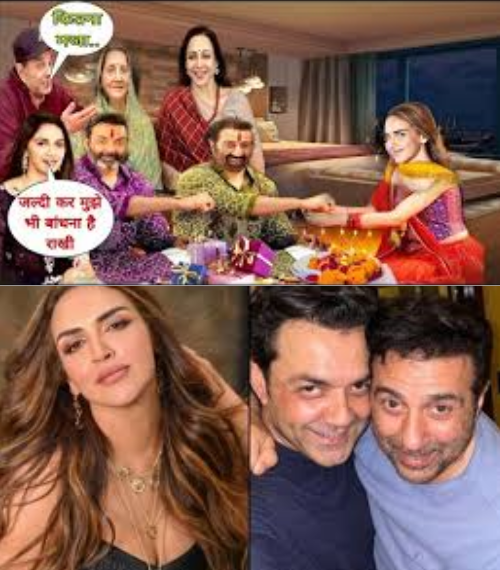
Nevertheless, questions persist. If the family can come together publicly for a movie promotion, as they did during the promotions of Gadar 2, why not for a cultural celebration like Raksha Bandhan? Public appearances at such festivals would not only be a powerful statement of unity but also help dispel persistent rumors of estrangement and division. Fans are not merely looking for entertainment; they often look up to celebrities as reflections of societal values. A public Raksha Bandhan celebration involving all siblings — Sunny, Bobby, Esha, and Ahana — could send a strong message about familial reconciliation, acceptance, and the evolving nature of relationships.
Moreover, such an event could be healing for the family itself. Festivals are, after all, opportunities to bridge gaps, forgive past grievances, and move forward. Even if the relationships between the half-siblings have been distant or strained, Raksha Bandhan provides the perfect occasion to initiate dialogue. It doesn’t require grand gestures. A simple gathering, a shared meal, or even a rakhi tied with genuine affection can speak volumes.
In Indian culture, step-siblings often navigate complex emotional territories. There’s societal pressure to conform to an ideal of sibling love, but the lived reality can be far more nuanced. There may be feelings of alienation, rivalry, or even indifference, especially when the relationships are shaped more by public expectation than personal experience. The Deol family, in this regard, represents many modern Indian families — where blended relations are a reality, but not always a harmonious one.
Still, there’s a yearning, especially among fans, to see the family come together — not just on screen but in real life. The idea that Sunny and Bobby might one day be seen tying rakhi from Esha and Ahana is not just about celebrity gossip; it’s about the hope that even the most complex relationships can find moments of grace and connection.
Ultimately, Raksha Bandhan is not about perfection. It’s about intention. It’s about reaching out, even if awkwardly, and affirming the ties that bind us — whether through blood, love, or shared history. For the Deol family, the path to public unity may still be unfolding. But as time passes, and as the generations grow older and perhaps more reflective, there may come a moment when they choose to celebrate Raksha Bandhan not just privately or digitally, but openly — together as a family.
That day, if it ever comes, would not only warm the hearts of fans but also stand as a testament to the evolving definitions of family in Indian society. Because in the end, what truly matters is not whether a rakhi is tied in public or in private, but whether it is tied with genuine feeling. And that, no camera can capture — only hearts can.
Play video :
News
Ajay Devgn Reaction On Premanand Ji Maharaj Controversy | Premanand Ji Maharaj | Ajay Devgn
Ajay Devgn Reaction On Premanand Ji Maharaj Controversy | Premanand Ji Maharaj | Ajay Devgn The recent controversy surrounding spiritual…
Why did Hema Malini leave ailing Dharmendra alone at the last moment? Dharmendra Sad News, Hema Malini
Why did Hema Malini leave ailing Dharmendra alone at the last moment? Dharmendra Sad News, Hema Malini . . ….
Pregnant Katrina Kaif Blessed with A Baby after her Secret Pregnancy with Vicky Kaushal in London!
Pregnant Katrina Kaif Blessed with A Baby after her Secret Pregnancy with Vicky Kaushal in London! . . . Katrina…
Amitabh Bachchan Wants To Support Rekha By Marrying Her In Hospital
Amitabh Bachchan Wants To Support Rekha By Marrying Her In Hospital . . . Amitabh Bachchan’s Heartfelt Decision: Supporting Rekha…
Jaya Bachchan Upset On Amitabh Bachchan Decision Of Marriage With Rekha
Jaya Bachchan Upset On Amitabh Bachchan Decision Of Marriage With Rekha Spoken in a tone that blends empathy with quiet…
Dharmasthala mass burial case: SIT Expands Search, Supreme Court Denies Media Gag
Dharmasthala mass burial case: SIT Expands Search, Supreme Court Denies Media Gag The Special Investigation Team (SIT) probing the Dharmasthala…
End of content
No more pages to load


